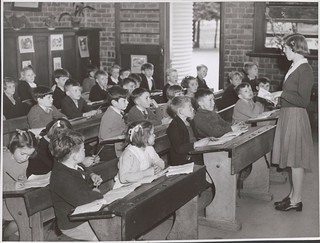Within our society we are bombarded daily with various claims and stories about the impact of science on our world. These can range from global warming and medical advances all the way to the food we eat. When we have knowledge and understanding about scientific processes and larger concepts we can then hopefully approach this information in an informed manner. If we grasp the concept of scientific literacy we can question the world around us. The idea of scientific literacy is basically being educated as to how science moulds the world. This can hold great cultural, social and personal importance. The skills that are developed when we analyse and critique scientific information are transferable. Scientific knowledge then becomes a very observational, experiential, logical and somewhat sceptical way of knowing. This enables people to ask questions and find answers. If we are to be fed “facts” by the media it is with scientific literacy that we can decide whether to take them at face value or delve further for answers. This also grants us the tools to reach conclusions through fair debate and applicable evidence.
Scientific literacy is very important as not having it can lead to misunderstandings. This happens a great deal with media reporting when the journalist didn’t have a good level of scientific literacy and writes a report which spreads incorrect information to the public, this can often have a very negative impact. An example of this is the report which claimed there was a link between the MMR vaccine and ASD, which has now been proven wrong. However this report was picked up by the media and they spread hysteria across the country over whether or not it was safe to vaccinate children. In 1998 BBC news published an article titled ‘Child vaccine linked to autism’ the Telegraph also published an article in 2007 which restarted the concern over the vaccines claiming there was a ‘New fear over MMR link with rising autism.’ This panic meant that hundreds of children were not vaccinated which could have been avoided by ensuring people have a good level of scientific literacy. Scientific literacy is the knowledge and understanding of scientific concepts and processes required for personal decision making, participation in civic and cultural affairs, and economic productivity. It also includes specific types of abilities.
A “fair test” refers to an experiment that is carefully controlled to ensure that the information gathered is reliable. In science, it is an experiment conducted in a manner so that it does not provide any advantages to any of the conditions or subjects being tested. To insure that your experiment is a fair test, you must change only one factor at a time while keeping all other conditions the same. Scientists call the changing factors in an experiment ‘variables’. For example, imagine we are wanting to test which toy car is the fastest while going down a sloping ramp. If we gently release the first car, but give the second car a push start, this is not a fair test! This is because we gave the second car an unfair advantage by pushing it to start. The only thing that should change between the two tests is the car. To ensure a fair test, we should start them both down the same ramp in exactly the same way.
Reference List
BBC (no date) Home. Available at: http://bbc.co.uk (Accessed: 7 February 2016).
The telegraph – telegraph online, daily telegraph, Sunday Telegraph (no date). Available at: http://www.telegraph.co.uk (Accessed: 10 February 2016).
The national academies press (no date). Available at: http://www.nap.edu (Accessed: 14 February 2016).
Oxford dictionaries (no date) in Oxford Dictionary. Available at: http://www.oxforddictionaries.com (Accessed: 13 February 2016).
Ailsa Mackie, Polly Ford, Rebecca Muir & Rebecca Birrell



